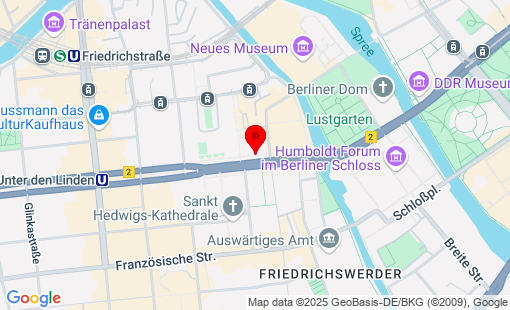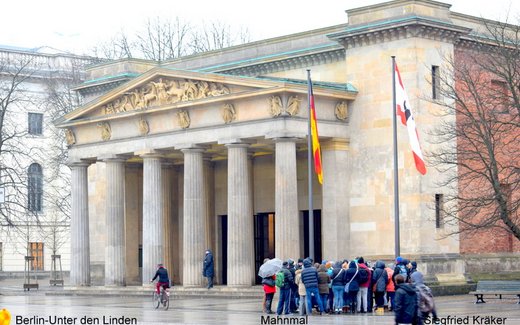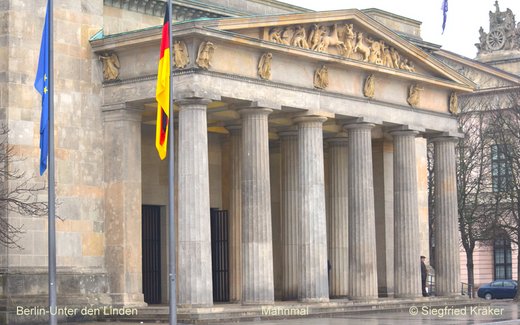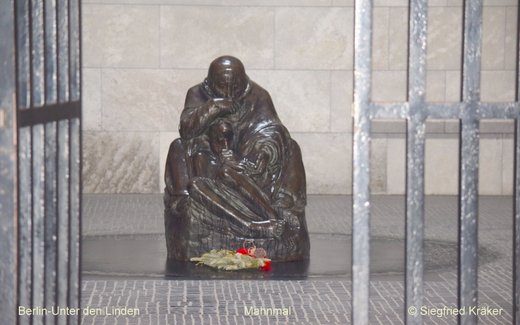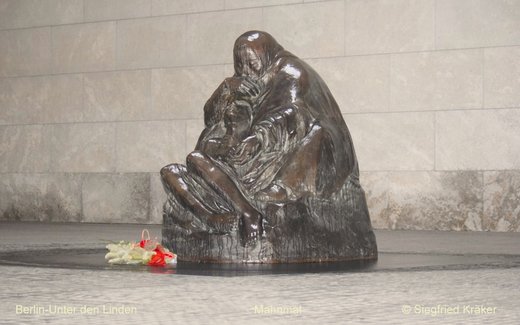Germany
Berlin-Mitte, Neue Wache
The New Guardhouse Central Memorial of the Federal Republic of Germany to the Victims of War and Tyranny 10117 Berlin-Mitte, Unter den Linden The building was erected by Karl Friedrich Schinkel, "roughly modeled on a Roman castrum", as a guardhouse with detention cells and as the seat of the central Berlin garrison authorities in the years 1816 - 1818. Military guard duties and guard parades took place here until 1918. in 1931, the Neue Wache was redesigned and inaugurated as a memorial to the fallen of Heinrich Tessenow. An oak wreath made of silver and gold leaves by the sculptor Ludwig Gies was placed on a granite block in the middle of the central room below a newly created opening in the ceiling. In 1933, the Neue Wache was rededicated by the National Socialists as the "Reich Memorial of Honour". Immediately after the war, the badly damaged building had no function. in 1951, after controversial discussions, the East Berlin city council decided to restore the Neue Wache as a memorial and in 1956 the building was turned into a "memorial to the victims of fascism and the two world wars". between 1957 and 1962, the exterior of the 1931 building was reconstructed by a collective led by Heinz Mehlan. in 1968/69, the interior was redesigned by a collective under the direction of architect Lothar Kwasnitza. Inside there was an altar-like cut Jena glass prism with an eternal flame, in front of it under a bronze plate two urns with the remains of an "Unknown Resistance Fighter" and an "Unknown German Soldier".
As an official "Memorial to the Victims of Fascism and Militarism" of the GDR, the new guard had an anti-militaristic component, which was, however, at odds with the military pathos of the changing of the guard ceremony with soldiers of the National People's Army. Since 1993, it has served as the "Central Memorial of the Federal Republic of Germany to the Victims of War and Tyranny". An enlarged replica of the Käthe Kollwitz sculpture "Mother with dead son" ("Pietà") from 1937 was placed in a reconstructed Tessenow interior. The dedication inscription "To the victims of war and tyranny" is carved into the ground in front of the sculpture. For the inauguration, the inscription was supplemented by a plaque listing the various groups of victims to be commemorated: the fallen of the world wars and those who suffered as a result of the wars; the victims of the consequences of war and expulsion; the murdered Jews, Sinti and Roma, homosexuals and "euthanasia victims"; the women and men of the resistance; as well as those who were persecuted and murdered "because they resisted totalitarian dictatorship after 1945".
